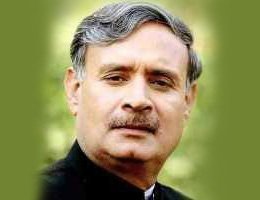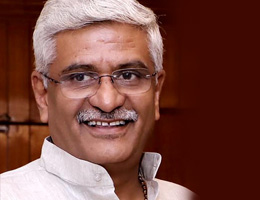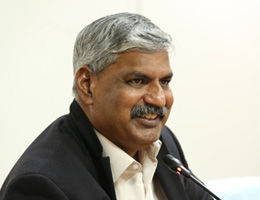






The nucleus of the Sub-Regional Centre of the Anthropological Survey of India was established at Jagdalpur in the form of Zonal Anthropological Museum (ZAM) on the 11th December, 1972, and was inaugurated formally on 7th April 1978. In the Fourth Five Year Plan the Anthropological Survey of India proposed to establish a chain of Zonal Anthropological Museums with a view to documenting and preserving the bio-cultural heritage of the people of our country which was implemented in the Fifth Five Year Plan. This ZAM was given the status of a Sub-Regional Centre on the 20th December, 1976. The Centre, since then started functioning independently with the same administrative power as that of the other Regional Centres of the Anthropological Survey of India. Shri Sundarlal Tripathi, a freedom fighter, renowned scholar and eminent social worker of Bastar, took all the initiative in establishing this Zonal Anthropological Museum. As a result of his untiring efforts, Prof. Humayun Kabir, the then Education Minister, Govt. of India, finally approved the proposal of establishing a zonal anthropological museum in the heart of a tribal milieu of Bastar under the close guidance of Dr. Surajit C. Sinha, former Director of the Anthropological Survey of India. Till the ZAM was given the status of Sub-Regional Centre, the staff members of the ZAM comprising five scientific and technical personnel and two supporting ministerial and one Group D staff were fully engaged in collecting museum specimens from the different tribal populations of the Bastar district of Madhya Pradesh and its adjoining areas of Chhattisgarh, the Koraput district of Orissa, the Chandrapur district of Maharashtra and the bordering district of Andhra Pradesh. With the increase in staff strength the researchers used to proceed to various parts of Bastar and adjoining areas of this district to collect specimens of ethnographical importance.
The ZAM at Jagdalpur was elevated to a Sub-Regional Centre in order to implement the Survey's commitment to continuous uninterrupted research and survey in social/cultural and physical anthropology and other allied disciplines in general. The geographical areas demarcated for its research activities include besides Bastar, Chhattisgarh, Koraput and other adjoining areas of Orissa, Andhra Pradesh, Maharashtra and Madhya Pradesh. After the establishment of the Sub-Regional Centre additional Nine posts were provided. The research personnel associated with the centre got themselves engaged in various research projects related to bio-cultural perspectives of the population of this region as a whole, besides continuing with its earlier programme of documentation and preservation of ethnographic specimens of the region.
Research activities
In the initial stage the museum was primarily engaged in documentation, preservation of rich cultural heritage of the people of the region and in dissemination of knowledge about the cultural unity and diversity of the people of Bastar and its adjoining areas through the exhibits of the museum. Since 1976 the research personnel of the Centre undertook a number of research projects initiated by the Anthropological Survey of India, in the fields of social/cultural anthropology, Archaeological Anthropology and physical anthropology.